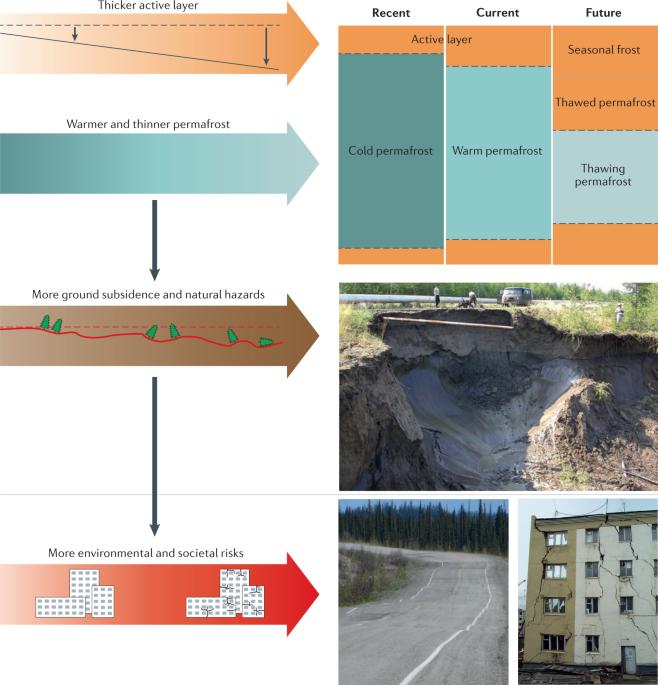Impacts of permafrost degradation on infrastructure
引用次数: 130
Abstract
The warming and thawing of ice-rich permafrost pose considerable threat to the integrity of polar and high-altitude infrastructure, in turn jeopardizing sustainable development. In this Review, we explore the extent and costs of observed and predicted infrastructure damage associated with permafrost degradation, and the methods available to mitigate such adverse consequences. Permafrost change imposes various threats to infrastructure, namely through warming, active layer thickening and thaw-related hazards such as thermokarst and mass wasting. These impacts, often linked to anthropogenic warming, are exacerbated through increased human activity. Observed infrastructure damage is substantial, with up to 80% of buildings in some Russian cities and ~30% of some road surfaces in the Qinghai–Tibet Plateau reporting damage. Under anthropogenic warming, infrastructure damage is projected to continue, with 30–50% of critical circumpolar infrastructure thought to be at high risk by 2050. Accordingly, permafrost degradation-related infrastructure costs could rise to tens of billions of US dollars by the second half of the century. Several mitigation techniques exist to alleviate these impacts, including convection embankments, thermosyphons and piling foundations, with proven success at preserving and cooling permafrost and stabilizing infrastructure. To be effective, however, better understanding is needed on the regions at high risk. Permafrost thaw and degradation threaten circumpolar infrastructure. This Review documents observed and projected infrastructure impacts, as well as the mitigation strategies available to minimize them.

永冻土退化对基础设施的影响
富冰永久冻土的变暖和融化对极地和高海拔地区基础设施的完整性构成巨大威胁,进而危及可持续发展。在本综述中,我们将探讨已观察到和预测到的与永冻土退化相关的基础设施损害的程度和成本,以及减轻这些不利后果的可用方法。永冻土的变化对基础设施造成了各种威胁,包括气候变暖、活动层增厚以及与融化相关的危害,如热卡岩和大规模流失。这些影响往往与人为变暖有关,而人类活动的增加又加剧了这些影响。已观测到的基础设施损坏情况严重,俄罗斯一些城市高达 80% 的建筑物和青藏高原约 30% 的路面受到损坏。在人为变暖的情况下,预计基础设施的破坏将持续下去,到 2050 年,30-50% 的关键环极基础设施将面临高风险。因此,到本世纪下半叶,与冻土层退化相关的基础设施成本可能上升到数百亿美元。目前已有几种缓解技术可减轻这些影响,包括对流路堤、恒温箱和打桩地基,这些技术在保护和冷却永久冻土以及稳定基础设施方面已被证明是成功的。不过,要想取得成效,还需要更好地了解高风险区域。永冻土融化和退化威胁着环北极基础设施。本报告记录了已观察到的和预计的基础设施影响,以及可用于将影响降至最低的缓解战略。
本文章由计算机程序翻译,如有差异,请以英文原文为准。
求助全文
约1分钟内获得全文
求助全文

 求助内容:
求助内容: 应助结果提醒方式:
应助结果提醒方式:


